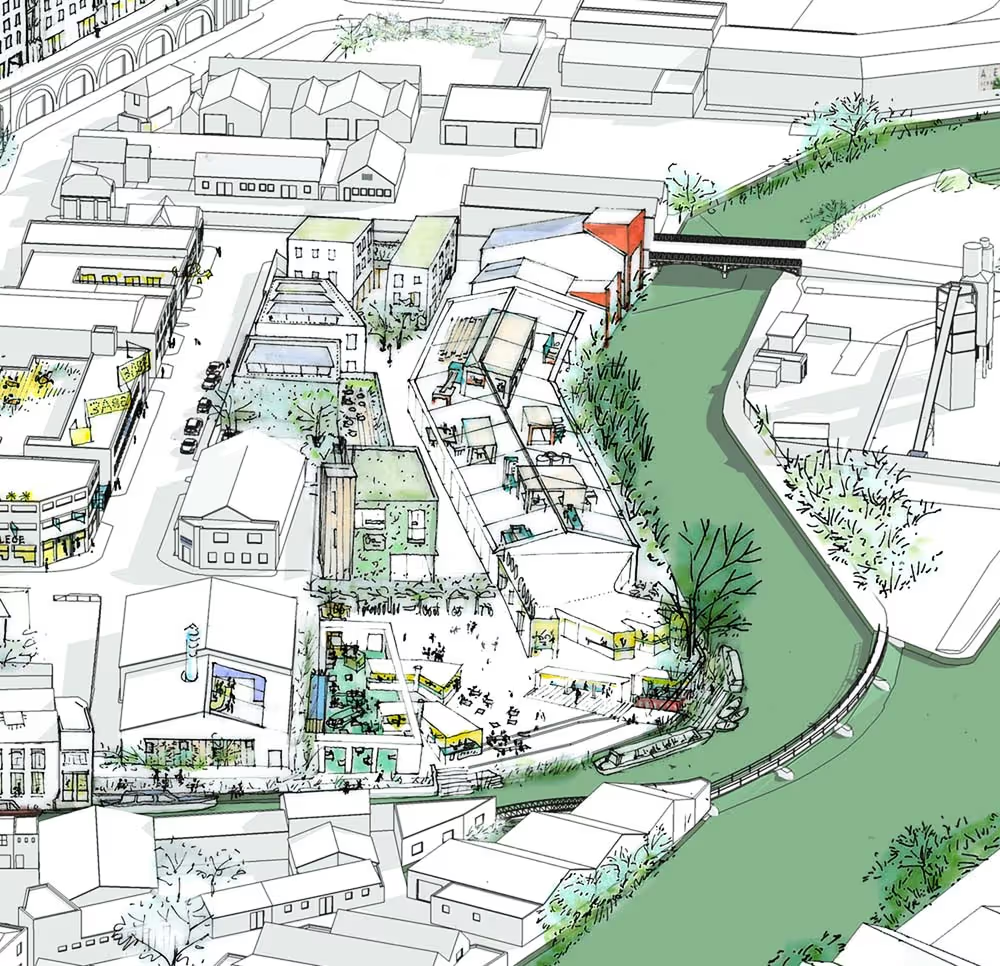
Leicester Waterside
Leicester Watersite is a site which for a long time has been slated for demolition and comprehensive redevelopment. Because of the recession and the related dearth of financing for large developments, the area has been in limbo. It has a beautiful location between a canal and a river, and the surviving buildings, although superficially in need of a little care, are robust assets that could be utilised if one only saw them as opportunities rather than problems.
Ash Sakula has treated the situation, as it exists, as an opportunity. We organised a series of events, consultations, and cartooning workshops to re-imagine the future development of the neighbourhood. We invited all of the local residents, businesses, council, mayor, hca (homes and communities agency), and the original developer, all of whom have an interest in seeing the area move forward.
Finding that people were stuck in an "all-or-nothing" mentality towards the site's regeneration, an approach which needs a large capital expenditure at one point in time (something that couldn't be clinched in the current credit squeeze), we developed a strategy by which the site could be transformed through a co-ordinated series of micro-investments. These would increase in scale and scope subject to the increasing attractiveness and value of the area over time. Starting with investments in new signage, a summer festival and the renovation of key corner sites, the way is paved for housing and enterprise to flourish.
This is an incremental urbanism, in contrast to the norm of comprehensive redevelopment. It sees neighbourhoods adapting to change, rather than being invented anew.
It is a project at the cutting edge of the new localism agenda in the UK, where growth and development can occur in the most difficult of places, facilitated and given form though parties like us. The key is to get not only the support, but the full participation and involvement of local businesses and residents in the future shape of their areas.
As an approach, at any scale and with all projects from new builds to incremental transformations like this, we believe this is the way to build long-lasting, sustainable assets that are resilient, loved, and yield value and returns over an extended time-scale.

Further future proposals.
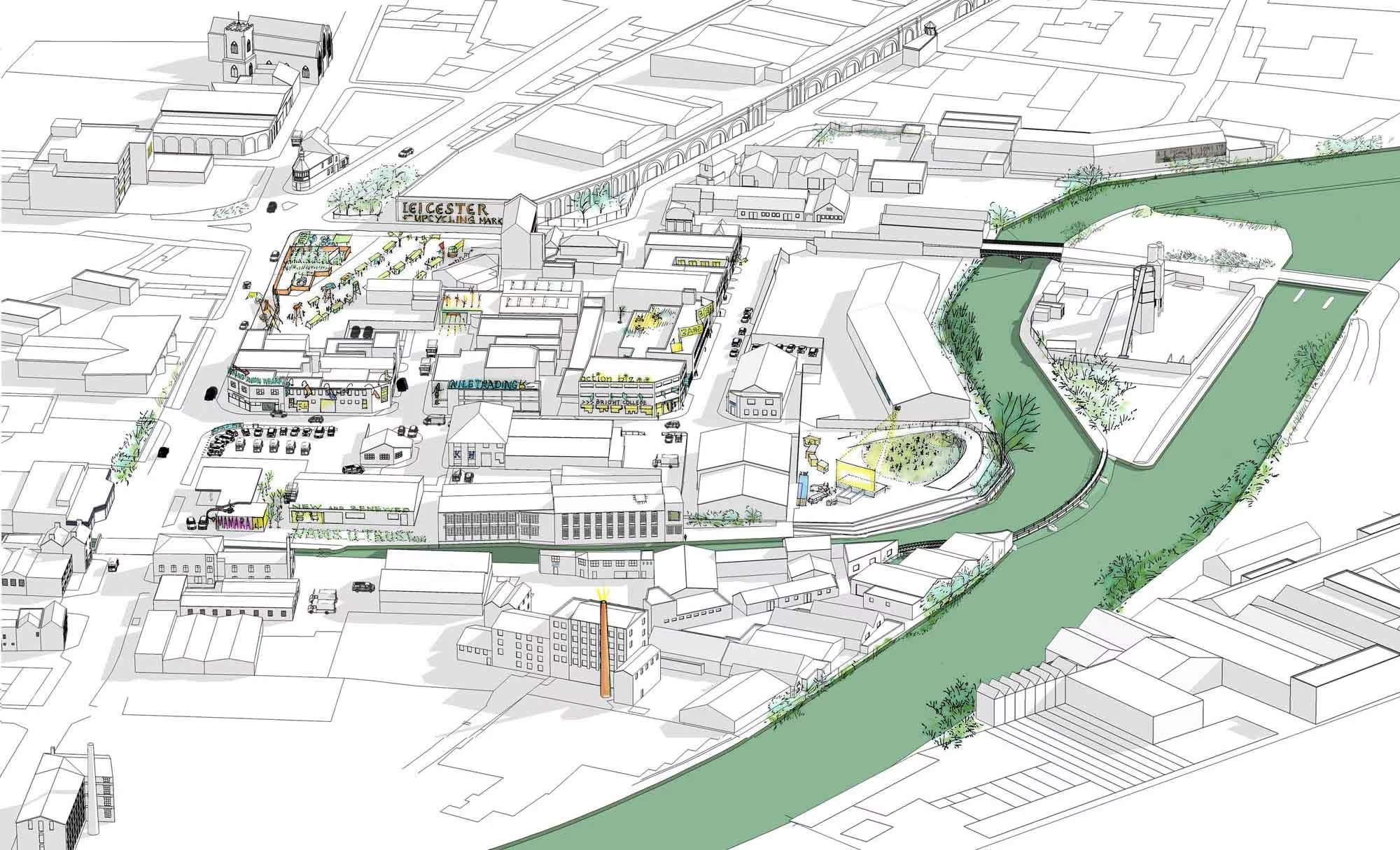
Near future proposals.
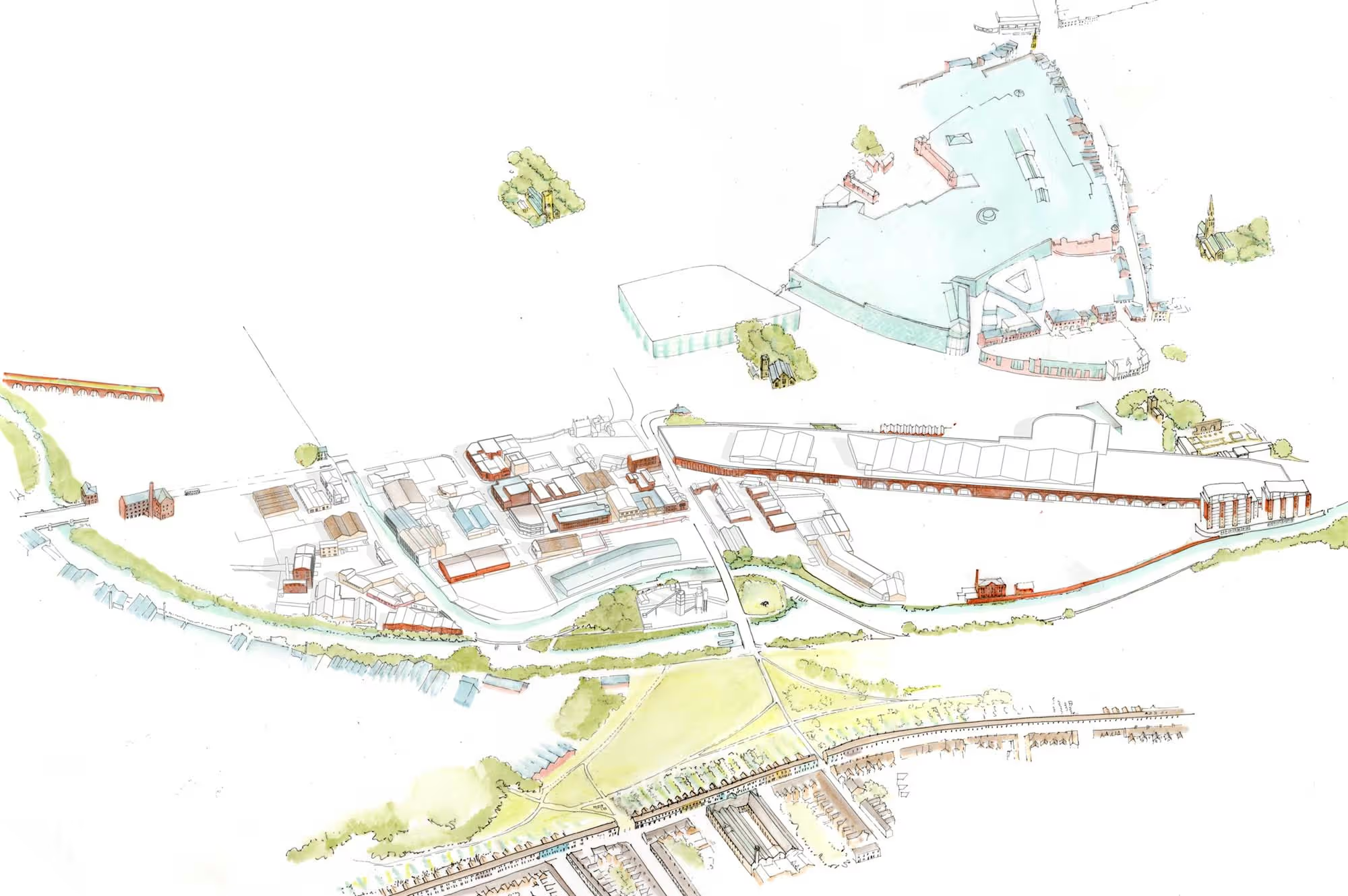
Leicester Waterside today.
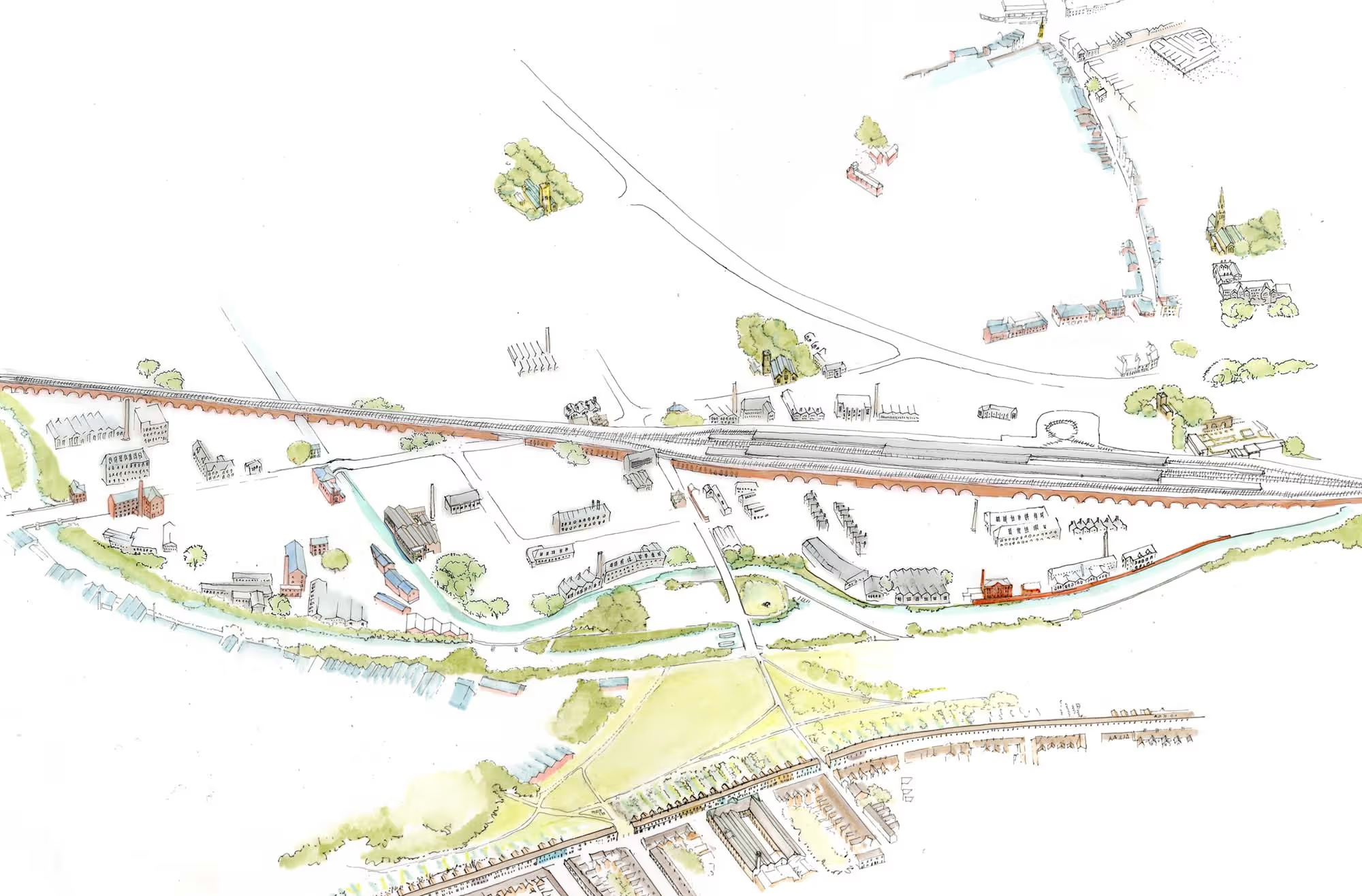
Leicester Waterside in the Victorian era.

We created an adaptable neighbourhoods cookbook, with 6 small steps to help other neighbourhoods:
1 - Tell Tall Tales
Don’t plan, narrate. Imagine your neighbourhood through the looking glass, as if anything were possible. Inspirational stories will capture other people’s imaginations and become a reality. The ones that don’t become part of the area’s Imaginary Resources Department.
2 - Activate a piece of public space near you regularly.
Make one of your imaginings a part of everyone’s day, or week, or month.
So: Set up a regular event or activity (bake-sale, bric-a-brac market, donkey rides, story telling camp-outs, shed-building contests, sports-day-reunions) in a street, square, corner, or vacant lot.
And: Try to do this in an unused building in the area. It deepens a place when everyone remembers that before a place is what it is, that we all did life classes there, or it used to be a piano marathon hall for a couple of years
3 - Open up to your neighbours
Either: Socially, organizing community shared interest events where you bring together porcelain lovers with an eye for avant-garde teapot experimentation, or setting up and participating in a community forum online where sub-forums can proliferate and people can type away to their hearts content, and meet up if an idea is catching...
And: Physically opening up your building/home, removing gates, opening up the ground floor, semi-public outdoor spaces, larger windows. Personalize your façade, make your walls tell tales to kids passing by. Talk about yourself through your front garden, your architecture, your hedge.
4 - Transform a public corner
Together, commit to transform your favourite public corners and streets. Personalise them so that they embody local passions, needs, idiosyncrasies and pride. Make your local junction a great cathedral, that is grand not through its size but through its joy in communicating… every bench can say something (Jonathan always loved to look at Jane’s house from this spot, and still does, and is very much alive thank you very much…) and every plant should whisper.
5 - Make and maintain a neighbourhood tale.
Put all the stories, experiences and myths of your shared neighbourhood life into a oral saga that will keep living room campfires alight with stories of the streets and characters of the area. You are the hero.
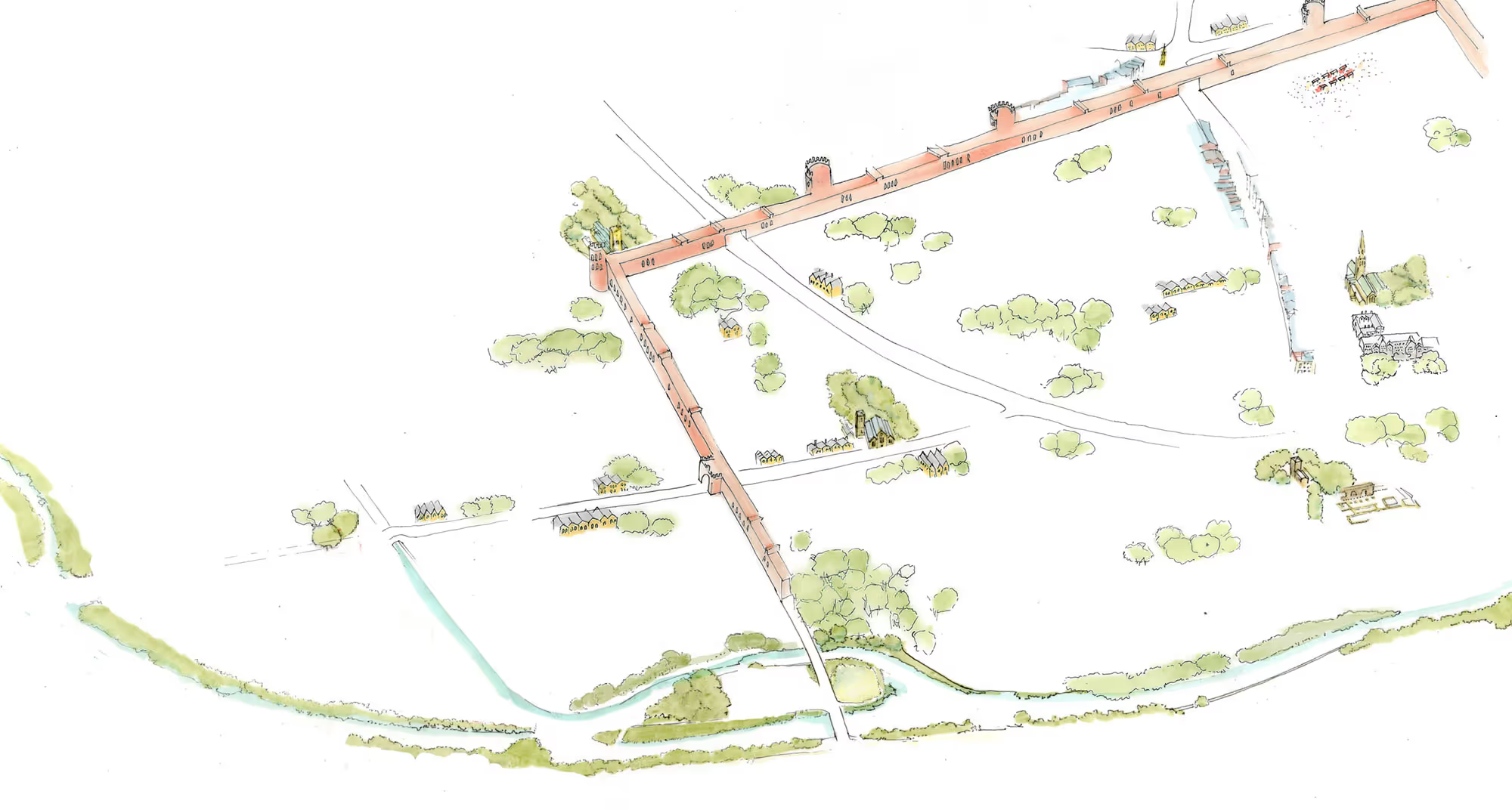
Leicester Waterside in the Medieval era.
